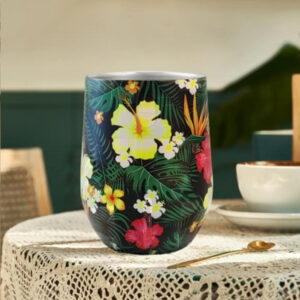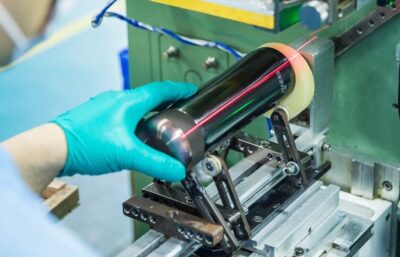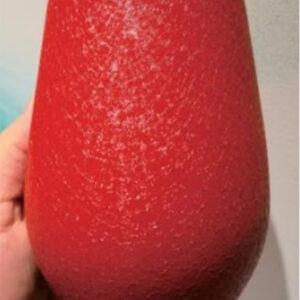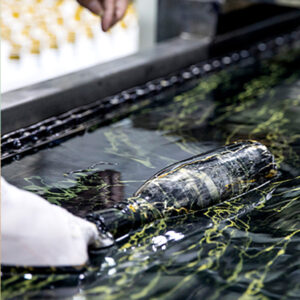How to choose surface treatment?
As consumer expectations for water bottles continue to rise, manufacturers are seeking new ways to create products that combine aesthetics, functionality, and sustainability. The CMF (Color, Material, Finish) process has become a crucial tool in achieving these goals. This innovative approach integrates color, material selection, and surface treatment to enhance the visual appeal, durability, and usability of water bottles. In this article, we’ll explore the various CMF processes, their advantages and limitations, and how to choose the best approach for your custom water bottles.
The CMF process focuses on the intricate details of a product’s design and manufacturing, encompassing three core elements: color, material, and finish. These aspects are tailored to create bottles that meet specific consumer demands for style, texture, and practicality. Whether it’s a sleek metallic finish, vibrant colors, or innovative textures, CMF processes allow manufacturers to craft unique bottles that stand out in a competitive market.
Table of Contents
ToggleCommon CMF Techniques
1, Vacuum Coating
Vacuum coating, or vacuum plating, applies a glossy or metallic finish to a bottle’s surface. This process can produce a range of effects, from high-gloss metallic sheens to textured matte finishes. Vacuum coating is ideal for achieving an upscale look but requires precise control to avoid imperfections such as bubbles.
While vacuum coating delivers superior durability and aesthetic appeal, the cost is relatively high, making it better suited for high-end bottles or limited-edition designs.

2, Spraying
Spraying involves applying layers of paint or coatings to a bottle’s surface, creating vibrant colors and textures. It is widely used due to its affordability and versatility, with options like UV paint, optical coatings, and baking finishes available.
Although spraying is cost-effective and simple, the resulting finish may be prone to fading, peeling, or scratches over time. This process works best for products requiring large-scale production, such as everyday water bottles.

3, Laser engraving

Laser engraving uses precision technology to etch intricate patterns or text onto a bottle’s surface. This process creates unique designs with a premium feel and is safe for the underlying material.
However, laser engraving is more expensive and typically reserved for high-end or small-batch products, such as corporate gifts or commemorative bottles.
4, Porcelain Coating
Porcelain coating involves baking ceramic layers onto bottles at high temperatures. This technique enhances durability, heat resistance, and ease of cleaning, making it a practical choice for insulated or ceramic bottles.
While porcelain offers a smooth and durable finish, its range of colors and textures is limited compared to other processes. Additionally, careful handling during production is necessary to avoid cracking or deformation.

5, Special spray plating
Special spray plating creates intricate textures and patterns, such as rainbow effects, seaweed-like designs, or gradient transitions. This process is ideal for producing eye-catching and fashionable bottles that appeal to niche markets.
However, the higher cost of special spray plating means it’s best suited for premium products where uniqueness is a priority.

6, Transfer Printing and 3D Printing
Transfer printing uses technologies like water or heat transfer to apply detailed patterns onto bottles, offering vibrant and customizable designs. Meanwhile, 3D printing allows for highly personalized shapes and textures, pushing the boundaries of creativity in bottle design.

Both techniques cater to the growing demand for personalized products but require advanced equipment and may involve higher costs.
7, Special coatings
 Special coatings add special pigments, additives, or composite materials to the basic coating to form different surface effects. These include UV ice flowers, nano sand texture, nano color dazzle, nano feather texture, nano etching, seven-color electroplating+ rubber paint, etc.
Special coatings add special pigments, additives, or composite materials to the basic coating to form different surface effects. These include UV ice flowers, nano sand texture, nano color dazzle, nano feather texture, nano etching, seven-color electroplating+ rubber paint, etc.
Advantages: Special coatings can realize different surface effects, with good anti-fouling, waterproof, anti-corrosion, wear-resistant, durable and other properties, which can improve the service life of the bottles.
Disadvantages: The cost of special coatings is relatively high, the production cost is large, need to consider the production cost and market demand.
Scope of application: The special coating technology is suitable for consumers who pursue higher user experience or more personalized needs, such as outdoor adventure cups, wedding commemorative cups, etc. When selecting this process, it is crucial to consider the cost, market demand, and brand positioning.
7、Others
Transfer printing uses technologies like water or heat transfer to apply detailed patterns onto bottles, offering vibrant and customizable designs. Meanwhile, 3D printing allows for highly personalized shapes and textures, pushing the boundaries of creativity in bottle design.
Both techniques cater to the growing demand for personalized products but require advanced equipment and may involve higher costs.
Ⅱ.How to choose the right CMF production process?
Choosing the most suitable CMF process for water bottle manufacturing requires a careful balance of aesthetics, functionality, and cost-effectiveness. Here are some key considerations:
- Product Positioning and Market Demand
The choice of process should align with your product’s target audience. For instance, high-end bottles may benefit from premium finishes like vacuum coating or laser engraving, while mass-market products might rely on cost-effective spraying techniques. - Innovation and Personalization
To stand out in a crowded market, manufacturers must address consumer demand for unique and innovative designs. Techniques like 3D printing and transfer printing enable high levels of customization, making them ideal for limited-edition or specialty products. - Cost and Efficiency
Production budgets often dictate process selection. Spraying and porcelain coating are cost-effective solutions for large-scale production, while more expensive techniques like laser engraving are better for small batches or exclusive designs. - Sustainability
As environmental concerns grow, manufacturers should prioritize eco-friendly processes and materials. Selecting low-impact finishes and recyclable materials can enhance sustainability while meeting consumer preferences for greener products. - Material Compatibility
The bottle’s base material plays a crucial role in determining the CMF process. For instance, porcelain coating is ideal for ceramic bottles, while laser engraving is more suitable for metal surfaces.
As CMF technologies evolve, new methods such as nano-coatings, special pigments, and advanced printing techniques are emerging. These innovations allow water bottle manufacturers to push the boundaries of design while maintaining practicality and durability. By staying at the forefront of CMF advancements, manufacturers can continue to meet the ever-changing demands of consumers.


